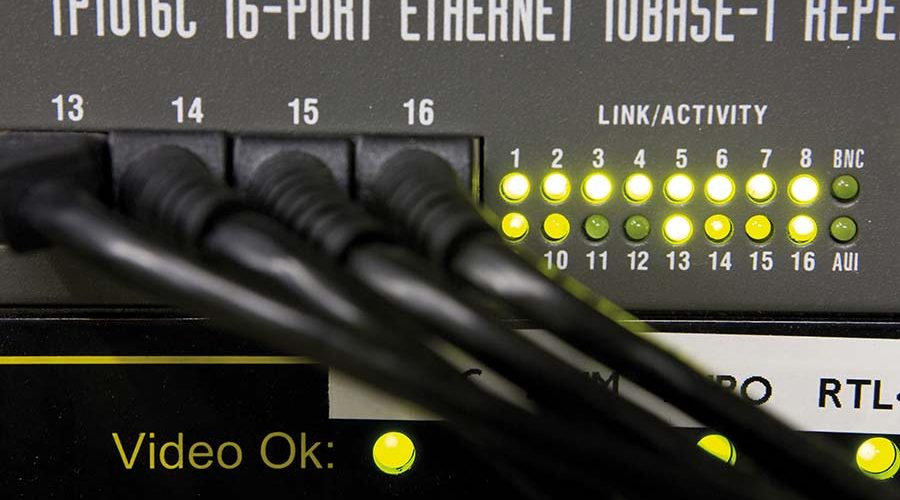When planning for PoE applications, heat management of the cable channel must be a top consideration. Here, Zoran Borcic, Draka Global Product Manager Datacom, offers advice on how to achieve this, including the maximum bundle sizes that can be used and the maximum drive distances that can be achieved, whilst also reducing power loss.
Draka
PoE transmits power and data over a single cable, saving the cost of purchase and operation of additional cabling. PoE injectors or switches/hubs serve as the power source.
PoE is ideal for remote devices, such as surveillance cameras or WLAN access points installed in inaccessible places, and is becoming important in smart offices and many network-compatible devices in industry.
The number of PoE-capable ports has tripled in the past five years. Network cables that can transmit more and more power are driving the trend. However, the addition of electricity means an increased load for the cable/link/channel, which usually results in increasing cable bundle temperature. The greater power a data cable delivers, the more heat is generated in the cable. In addition, the bundle size and installation environment directly influence the cable’s heat dissipation leading to a significant temperature increase. Furthermore, a channel which includes two/three patch cords with smaller conductors (higher resistance) than the cable could lead to the possibility of even higher temperatures being generated.
The maximum operating ambient temperatures of PoE cables is 60°C and the components 50°C. Heat management of these needs to be an important consideration. Why? Because continual heating and cooling over time will change the cable’s performance, frequently decreasing transmission properties and softening the insulation material, leading to loss of associated permanent structural symmetry. Heat build-up over a PoE channel can also negatively impact the connectivity components. There is a real risk that if disconnected under load, a spark can be generated which could destroy contacts.
To achieve optimum performance, the total heating effect from power loss versus heat dissipation must not combined exceed 10°C. To maintain this operating limit, the power loss must be reduced, or the heat dissipation increased. Clearly power loss is undesirable, so heat dissipation should be a major focus when designing and installing cabling systems.
Key factors which influence the heat dissipation include bundle size, shielding, patch cords and air flow. Smaller bundles are ideal, as are shielded cables as the metal of the shield helps to dissipate the heat generated inside (plus they allow greater flexibility in heat management at the design stage). Patch cords with a conductor of less than 26 AWG should always be avoided, as replacing a patch cord with a product that is smaller in copper size and/or increased in length could change the stability of the bundle/installation, or even the whole system. Obviously greater flowing air currents help keep temperatures down, so cable laid on open grille are preferential to closed duct.
The popularity of PoE is set to continue, but it’s essential to understand the impact of heat generation and consequently the need for heat management when designing and installing PoE cable networks if you are to achieve maximum drive distances whilst maintaining network stability and longevity.







